Organic farming has gained immense popularity in recent years, thanks to its commitment to sustainable practices and producing chemical-free, healthy food. However, organic farmers face their own set of challenges, and one of the most significant is managing plant diseases without synthetic chemicals. In this article, we’ll delve into the top 10 common plant diseases in organic farming and provide practical solutions for beating them while staying true to organic principles.
Read, Also >>>>>> Discover How These 10 Beneficial Insects Are Used in Agriculture and How They Contribute To Pest Control
1. Late Blight (Phytophthora infestans)
Late Blight is a fungal-like pathogen that wreaks havoc on crops, particularly potatoes and tomatoes. It’s the same disease responsible for the Irish potato famine in the mid-19th century. This devastating pathogen thrives in cool, moist conditions, making it a significant concern for organic farmers, especially in regions with frequent rainfall or high humidity.
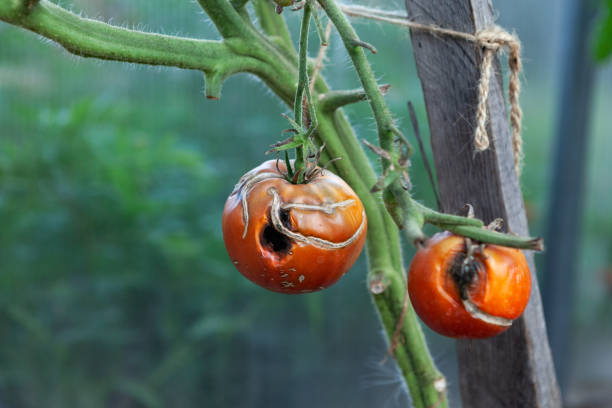
Identification:
Late Blight first appears as dark, water-soaked lesions on the leaves. These lesions can rapidly expand and turn brown, with white, fluffy mold growth on the underside in humid conditions. Infected fruits also develop dark, sunken spots. If left unchecked, Late Blight can quickly destroy an entire crop.
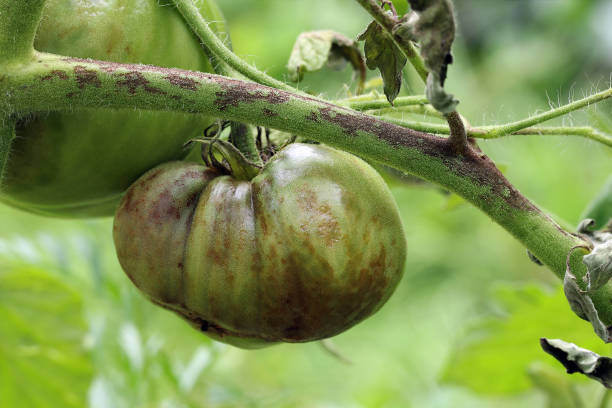
Organic Management Strategies:
Copper-Based Fungicides: Copper-based fungicides are one of the primary tools in an organic farmer’s arsenal against Late Blight. These compounds, such as copper sulfate, work by creating a protective barrier on plant surfaces, preventing the pathogen from infecting the plant. It’s crucial to apply copper fungicides preventively before symptoms appear and reapply after heavy rain.
Proper Crop Rotation: Crop rotation is essential to disrupt the disease’s lifecycle. Avoid planting potatoes or tomatoes in the same location for at least three years. This reduces the pathogen’s presence in the soil.
Resistant Varieties: Choose potato and tomato varieties known for their resistance to Late Blight. While resistance doesn’t guarantee immunity, it can significantly reduce the likelihood and severity of infection.
Pruning and Thinning: Regularly prune and thin your plants to improve air circulation. Late Blight thrives in damp conditions, so increasing airflow can help prevent infection.
Monitoring and Early Detection: Regularly inspect your crops for any signs of Late Blight. If you spot the characteristic lesions, act quickly to remove infected plant parts. Dispose of them away from your garden to prevent further spread.
Proper Watering: Avoid overhead irrigation, as wet leaves create an ideal environment for Late Blight to thrive. Instead, water is at the base of plants to keep the foliage dry.
Mulching: Applying mulch around the base of tomato and potato plants can help prevent soil splashback, which can carry Late Blight spores onto the leaves.
Remember, organic management of Late Blight requires a proactive approach. Regular scouting for symptoms, combined with preventative measures like copper sprays and proper plant spacing, can go a long way in protecting your organic potato and tomato crops from this destructive disease. While Late Blight can be challenging, with dedication and the right organic strategies, you can minimize its impact on your farm and continue to produce healthy, chemical-free crops. Happy farming!
2. Powdery Mildew (Erysiphe spp.)
Powdery Mildew is a widespread fungal disease that affects a broad range of plants, from cucumbers and squash to roses and fruit trees. This disease can be particularly troublesome for organic farmers as it can quickly spread and mar the appearance of plants. Fortunately, there are organic methods to manage and prevent Powdery Mildew effectively.

Identification:
Powdery Mildew appears as a white, powdery substance on the leaves, stems, and even fruits of plants. This powdery substance is a mass of fungal spores. As the disease progresses, affected plant parts may become distorted, and leaves may yellow and wither.
Organic Management Strategies:
Neem Oil: Neem oil is a versatile organic solution for Powdery Mildew. It works by disrupting the fungal pathogen’s life cycle and preventing it from establishing on the plant. Dilute neem oil as per the instructions on the label and spray it on affected plants regularly, especially during periods of high humidity.
Baking Soda Spray: A homemade baking soda spray can be an effective organic remedy. Mix 1 tablespoon of baking soda with a few drops of liquid soap and a gallon of water. Spray this mixture on plants affected by Powdery Mildew. The alkaline nature of baking soda disrupts the spore development.
Proper Spacing: Adequate plant spacing is crucial to ensure good air circulation. Powdery Mildew thrives in stagnant air. When plants are crowded, they provide a cozy environment for the disease to take hold.
Select Resistant Varieties: When possible, choose plant varieties known for their resistance to Powdery Mildew. These varieties are less likely to succumb to the disease, reducing the need for intervention.
Prune Affected Areas: If you notice Powdery Mildew on your plants, prune and remove affected plant parts promptly. Dispose of these pruned materials away from your garden to prevent further contamination.
Avoid Overhead Watering: Water plants at the base rather than overhead to keep foliage dry. Wet leaves can encourage the growth of Powdery Mildew.
Use Milk Spray: A milk solution can be effective against Powdery Mildew. Mix one part milk with nine parts of water and spray it on the affected plants. The proteins in milk help inhibit fungal growth.
Choose Mildew-Resistant Plants: Some plant varieties have been bred for resistance to Powdery Mildew. Investigate and select these varieties when planning your organic garden.
By incorporating these organic management strategies into your gardening practices, you can effectively combat Powdery Mildew without resorting to synthetic chemicals. Remember to monitor your plants regularly, especially during periods of high humidity, as this disease can spread rapidly. With diligence and these eco-friendly approaches, you can enjoy a thriving organic garden with beautiful, healthy plants. Happy gardening!
Read, Also >>>>>> Discover How These 10 Beneficial Insects Are Used in Agriculture and How They Contribute To Pest Control
3. Downy Mildew (Peronospora spp.)
Downy Mildew is a destructive fungal-like pathogen that affects a wide range of crops, including spinach, lettuce, grapes, and cucumbers. It’s known for causing significant damage to leaves, reducing crop yields and quality. Organic farmers face the challenge of preventing and managing Downy Mildew without synthetic chemicals.
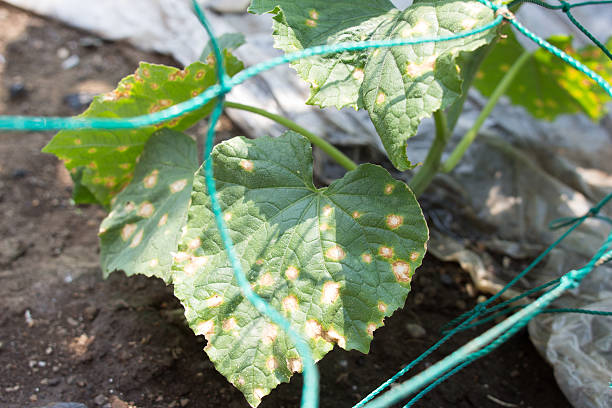
Identification:
Identifying Downy Mildew early is essential for effective management. Symptoms include the appearance of angular, yellow, or pale green lesions on the upper side of leaves, with a corresponding white, fluffy growth on the underside. As the disease progresses, leaves may become distorted, and affected plants can suffer from reduced photosynthesis.
Organic Management Strategies:
Resistant Varieties: Start by choosing plant varieties that are resistant to Downy Mildew whenever possible. These varieties are less susceptible to infection, reducing the need for intervention.
Spacing and Pruning: Proper plant spacing and regular pruning are essential to allow for good air circulation. Downy Mildew thrives in humid conditions and stagnant air, so improving airflow can help prevent infection.
Avoid Overhead Watering: Wet leaves create an ideal environment for Downy Mildew to develop. Water your plants at the base to keep the foliage dry. Drip irrigation or soaker hoses are excellent options.
Copper-Based Fungicides: Organic farmers can use copper-based fungicides as a preventive measure against Downy Mildew. These fungicides create a protective barrier on plant surfaces, hindering the pathogen’s ability to infect. Apply them before the disease becomes widespread and follow label instructions carefully.
Baking Soda Spray: Similar to combating Powdery Mildew, a baking soda spray can also be effective against Downy Mildew. Mix 1 tablespoon of baking soda with a few drops of liquid soap and a gallon of water. Spray it on affected plants.
Remove Infected Leaves: If you notice Downy Mildew symptoms, promptly remove and dispose of infected leaves, preferably far away from your garden. This helps prevent the disease from spreading.
Cultural Practices: Employ proper crop rotation to disrupt the disease’s life cycle. Avoid planting susceptible crops in the same area for several seasons.
Vigilance: Regularly monitor your plants, especially during periods of high humidity or rainy weather when Downy Mildew is most likely to flourish. Early detection is key to effective management.
While Downy Mildew can be a persistent threat in organic farming, combining these organic management strategies can help you protect your crops naturally. Remember to remain vigilant and take action promptly if you spot any signs of the disease. With dedication and the right organic approaches, you can enjoy healthy, bountiful harvests in your organic garden. Happy farming!
4. Early Blight (Alternaria solani)
Early Blight is a fungal disease that primarily affects plants from the Solanaceae family, such as tomatoes and potatoes. It’s one of the most prevalent diseases organic farmers encounter, and its symptoms can lead to reduced crop yields and quality.

Identification:
Early Blight typically starts as small, dark brown to black lesions with concentric rings on older leaves of the affected plants. As the disease progresses, these lesions can expand and merge, causing severe damage to the foliage. If left untreated, Early Blight can weaken the plant, reduce fruit production, and even lead to plant death.
Organic Management Strategies:
Pruning and Sanitation: Regularly prune and remove the lower leaves of your tomato and potato plants to improve air circulation. Dispose of these pruned materials away from your garden to prevent further contamination.
Proper Spacing: Ensure that your plants have adequate spacing to allow for good air circulation. This reduces the chances of moisture accumulation, which can contribute to Early Blight development.
Mulching: Apply organic mulch, such as straw or shredded leaves, around the base of your plants. Mulch helps prevent soil splashback, which can carry Early Blight spores onto the leaves.
Water at the Base: Avoid overhead watering, as wet leaves create an ideal environment for Early Blight. Instead, water at the base of the plants to keep the foliage dry. Drip irrigation or soaker hoses are suitable alternatives.
Copper-Based Fungicides: Organic farmers can use copper-based fungicides as a preventive measure against Early Blight. Apply these fungicides before the disease becomes widespread and follow label instructions carefully.
Crop Rotation: Practice proper crop rotation to disrupt the disease’s life cycle. Avoid planting tomatoes and potatoes in the same location for at least three years.
Healthy Soil: Maintain healthy soil by adding organic matter, compost, and well-rotted manure. Healthy soil supports stronger, more disease-resistant plants.
Resistant Varieties: When possible, choose tomato and potato varieties that are resistant to Early Blight. These varieties are less likely to succumb to the disease.
Vigilance: Regularly inspect your plants for signs of Early Blight. If you spot any symptoms, take action promptly to remove and dispose of affected plant parts.
By integrating these organic management strategies into your gardening practices, you can effectively combat Early Blight without resorting to synthetic chemicals. Remember that prevention is key, so focus on maintaining good plant health and practicing vigilant monitoring. With dedication and these eco-friendly approaches, you can enjoy a thriving organic garden with healthy, disease-resistant crops. Happy gardening!
Read, Also >>>>>> Discover How These 10 Beneficial Insects Are Used in Agriculture and How They Contribute To Pest Control
5. Aphids (Aphidoidea)
Aphids are small, soft-bodied insects that come in various colors, including green, black, and red. They have pear-shaped bodies and long antennae. Aphids reproduce quickly and can cause significant damage to plants by feeding on their sap and transmitting plant diseases.
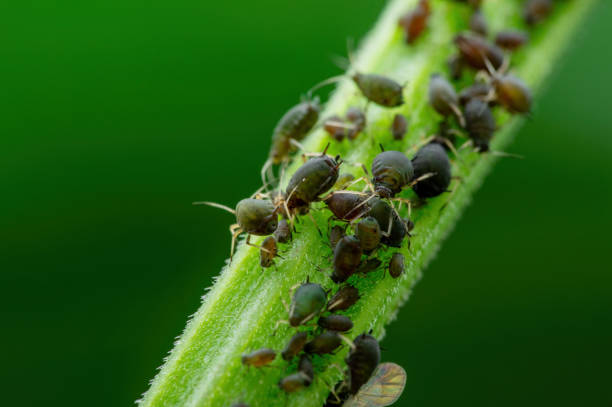
Identification:
Identifying aphid infestations is relatively easy. Look for clusters of tiny, pear-shaped insects on the leaves, stems, and buds of your plants. Aphids excrete a sticky substance called honeydew, which can attract ants and lead to the growth of sooty mold on plants.
Organic Management Strategies:
Beneficial Insects: Encourage natural predators of aphids in your garden. Ladybugs, lacewings, and parasitic wasps are all effective aphid predators. You can attract these beneficial insects by planting nectar-rich flowers or purchasing them for release in your garden.
Insecticidal Soap: Use insecticidal soap or neem oil to deter aphids. These organic solutions disrupt the insects’ cell membranes and can effectively control small infestations. Be sure to spray the affected plants thoroughly, covering both the upper and lower leaf surfaces.
Homemade Remedies: Create your own organic aphid spray by mixing a solution of water and a few drops of liquid dish soap or a teaspoon of neem oil. Spray this mixture directly onto the aphids. Always test a small portion of your plants first to ensure they can tolerate the solution.
Water Pressure: Use a strong blast of water from a garden hose to dislodge aphids from plants. This method can be effective for small infestations, and it won’t harm beneficial insects or the environment.
Companion Planting: Plant companion crops like marigolds, nasturtiums, and chives near your vulnerable plants. These companion plants can repel aphids with their strong scents or by providing alternative food sources.
Crop Rotation: Rotate your crops each season to disrupt aphids’ reproductive cycle. This practice can help prevent infestations from recurring in the same location.
Organic Pesticides: If all else fails and you have a severe aphid infestation, consider using organic pesticides like neem oil or diatomaceous earth. Be cautious when using any pesticide, even organic ones, and follow the label instructions carefully.
Regular Inspection: Keep a close eye on your plants for early signs of aphid infestations. Early detection and intervention are crucial for effective management.
Remember that aphids are a common garden pest, but with the right organic methods, you can keep their populations in check and protect your crops without resorting to harmful chemicals. Integrated pest management, which combines several of these strategies, can be particularly effective in keeping aphids at bay in your organic garden. Happy gardening!
6. Whiteflies (Aleyrodidae)
Whiteflies are tiny, flying insects that are typically white or pale yellow in color. They are closely related to aphids and can be challenging to manage due to their rapid reproduction and ability to transmit plant viruses.
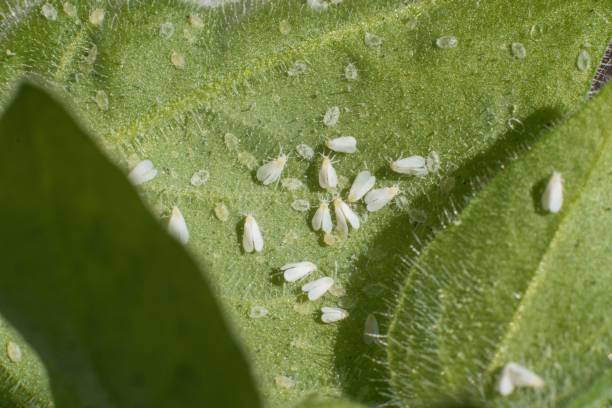
Identification:
Identifying whiteflies can be relatively easy. Look for small, winged insects with white or yellowish bodies that cluster on the undersides of leaves. When disturbed, they often flutter around in a cloud of tiny insects, resembling a swarm of white flies (hence the name).
Organic Management Strategies:
Yellow Sticky Traps: Yellow sticky traps are effective for monitoring and trapping adult whiteflies. These traps attract whiteflies with their bright color and sticky surface, preventing them from laying eggs and reducing their numbers.
Beneficial Insects: Encourage natural predators of whiteflies in your garden. Ladybugs, lacewings, parasitic wasps, and predatory beetles are known to feed on whitefly nymphs and adults. Plant nectar-rich flowers to attract these beneficial insects.
Neem Oil: Neem oil is an organic insecticide and repellent that can deter whiteflies. Mix neem oil with water and a few drops of liquid soap, and spray it on the affected plants. Neem oil disrupts the growth and reproduction of whiteflies.
Insecticidal Soap: Insecticidal soap can be an effective way to control whitefly populations. Spray the soap solution directly on the whiteflies, making sure to coat the undersides of leaves where they often hide.
Pruning Infested Leaves: If you notice a whitefly infestation, remove and dispose of heavily infested leaves or plant parts. This can help reduce the population and prevent further spread.
Row Covers: Use row covers made of lightweight fabric to physically block whiteflies from accessing your plants. Be sure to secure the covers tightly to prevent any gaps.
Companion Planting: Planting aromatic herbs like basil and marigolds near susceptible crops can help deter whiteflies. The strong scents of these companion plants can confuse and repel the pests.
Crop Rotation: Rotate your crops each season to disrupt the whiteflies’ reproductive cycle. Avoid planting the same crops in the same area for consecutive seasons.
Regular Inspection: Inspect your plants regularly for signs of whitefly infestations, such as sticky honeydew or sooty mold on leaves. Early detection is key to effective management.
Organic and integrated pest management practices are essential for successfully controlling whiteflies in your organic garden. By using a combination of these eco-friendly strategies, you can minimize whitefly damage and protect your crops without resorting to synthetic chemicals. Stay vigilant and take proactive measures to keep whiteflies in check. Happy gardening!
Read, Also >>>>>> Discover 10 Types of Agricultural Termites and How to Protect Your Crops Against It
7. Rust (Pucciniales)
Rust diseases are caused by various fungi belonging to the Pucciniales order. They can impact a wide range of plants, and the symptoms typically include small, circular, or elongated pustules on the plant’s surface. These pustules contain thousands of spores and can lead to leaf discoloration and weakening of the plant.

Identification:
Identifying rust diseases is relatively straightforward. Look for orange, reddish-brown, or yellowish pustules on the plant’s surface, usually on the undersides of leaves. These pustules can be accompanied by yellowing or browning of the surrounding plant tissue.
Organic Management Strategies:
Prune and Remove Infected Parts: The first step in managing rust is to prune and remove affected plant parts as soon as you notice them. Be sure to dispose of these materials away from your garden to prevent further spread.
Proper Spacing: Adequate plant spacing is crucial for good air circulation, as rust thrives in humid conditions. Ensure your plants are not overcrowded to reduce the risk of infection.
Watering: Water your plants at the base rather than overhead to keep the foliage dry. Wet leaves create a favorable environment for rust development.
Copper-Based Fungicides: Organic farmers can use copper-based fungicides as a preventive measure against rust diseases. These fungicides create a protective barrier on plant surfaces, making it more difficult for rust spores to establish.
Sulfur-Based Fungicides: Sulfur-based fungicides are another organic option for managing rust. They work by inhibiting fungal growth. Apply sulfur-based products according to label instructions and avoid using them during hot weather to prevent plant damage.
Companion Planting: Planting companion crops like garlic and onions can help deter rust diseases due to their natural antifungal properties.
Healthy Soil: Maintaining healthy soil with good organic matter can help plants withstand rust diseases. Healthy plants are less susceptible to infections.
Early Detection: Regularly inspect your plants for any signs of rust. Catching it early allows you to take action promptly and prevent the disease from spreading.
Remove Fallen Leaves: In the case of perennial plants like roses, be diligent about removing fallen leaves, as they can harbor rust spores over the winter.
Rust diseases can be challenging, but with a proactive approach and these organic management strategies, you can reduce their impact on your plants. Remember that prevention is often the most effective strategy, so focus on maintaining good plant health and practicing vigilant monitoring. With dedication and eco-friendly solutions, you can enjoy a flourishing garden with healthy, rust-resistant plants. Happy gardening!
8. Cabbage Worms (Pieris rapae)
Cabbage Worms are the larvae of the small white butterfly, also known as the cabbage white butterfly. They are green caterpillars with a voracious appetite for cruciferous vegetables, making them a significant concern for organic gardeners.
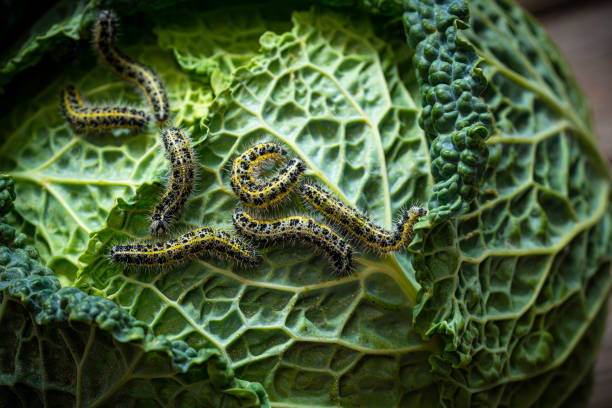
Identification:
Identifying cabbage worms is relatively straightforward. Look for bright green caterpillars with a pale stripe running down their back. They often blend in with the leaves of your cabbage, broccoli, or cauliflower plants.
Organic Management Strategies:
Handpicking: The most effective way to manage cabbage worms organically is by handpicking them off your plants. Inspect your cruciferous crops regularly, and when you spot caterpillars, simply pluck them off and dispose of them far from your garden.
Row Covers: Using row covers made of lightweight fabric can physically block cabbage butterflies from laying eggs on your plants. Be sure to secure the covers tightly to prevent any gaps.
Bacillus thuringiensis (Bt): This naturally occurring bacterium, available in organic formulations, can be an effective control method. When cabbage worms ingest Bt, it disrupts their digestive system and ultimately leads to their demise. Follow the label instructions for the application.
Companion Planting: Planting aromatic herbs like thyme, oregano, and mint near your cruciferous crops can help deter cabbage butterflies from laying their eggs. The strong scents of these companion plants can confuse and repel the pests.
Neem Oil: Neem oil can be used as a deterrent. Mix neem oil with water and a few drops of liquid soap, then spray it on your plants. Neem oil disrupts the feeding and growth of cabbage worms.
Birds and Beneficial Insects: Encourage natural predators of cabbage worms, such as birds, parasitic wasps, and predatory beetles, in your garden. Provide birdhouses and water sources to attract birds.
Healthy Soil: Maintain healthy soil with proper organic matter and balanced nutrient levels. Strong, healthy plants are less attractive to cabbage worms and are better able to withstand damage.
Crop Rotation: Rotate your crops each season to disrupt the cabbage worms’ reproductive cycle. Avoid planting cruciferous crops in the same area for consecutive seasons.
Trichogramma Wasps: These tiny parasitic wasps lay their eggs in cabbageworm eggs, effectively reducing the population. You can purchase Trichogramma wasps for release in your garden.
By implementing these organic management strategies, you can effectively control cabbage worms in your garden without resorting to synthetic chemicals. Remember to stay vigilant, inspect your plants regularly, and take prompt action when you spot any signs of infestation. With dedication and eco-friendly solutions, you can enjoy a thriving garden with healthy cruciferous crops. Happy gardening!
Read, Also >>>>>> Discover 10 Types of Agricultural Termites and How to Protect Your Crops Against It
9. Septoria Leaf Spot (Septoria spp.)
Septoria Leaf Spot is a fungal disease caused by various species within the Septoria genus. It is known for causing small, circular lesions with dark centers and yellow halos on the leaves of affected plants. This disease can weaken plants and reduce yields if not addressed.

Identification:
Identifying Septoria Leaf Spot is relatively straightforward. Look for small, dark spots with a lighter-colored halo on the leaves of your plants. As the disease progresses, these spots may coalesce, causing leaf yellowing and defoliation.
Organic Management Strategies:
Prune and Remove Affected Leaves: To manage Septoria Leaf Spot organically, start by pruning and removing affected leaves as soon as you notice symptoms. Be sure to dispose of these materials away from your garden.
Proper Spacing: Ensure that your plants have adequate spacing to allow for good air circulation. Proper spacing can reduce humidity around the plants, making it less favorable for the disease to spread.
Mulching: Apply organic mulch, such as straw or shredded leaves, around the base of your plants. Mulch can help prevent soil splashback, which can carry Septoria spores onto the leaves.
Water at the Base: Avoid overhead watering, as wet leaves create an ideal environment for Septoria Leaf Spot. Water your plants at the base to keep the foliage dry. Drip irrigation or soaker hoses are suitable alternatives.
Copper-Based Fungicides: Organic farmers can use copper-based fungicides as a preventive measure against Septoria Leaf Spot. These fungicides create a protective barrier on plant surfaces, making it more challenging for the disease to infect.
Sulfur-Based Fungicides: Sulfur-based fungicides can also be effective in managing Septoria Leaf Spot. They work by inhibiting fungal growth. Apply sulfur-based products according to label instructions and avoid using them during hot weather to prevent plant damage.
Resistant Varieties: When possible, choose tomato and potato varieties that are resistant to the Septoria Leaf Spot. These varieties are less likely to succumb to the disease.
Healthy Soil: Maintain healthy soil by adding organic matter, compost, and well-rotted manure. Healthy plants are more resilient to Septoria Leaf Spot and other diseases.
Crop Rotation: Practice proper crop rotation to disrupt the disease’s life cycle. Avoid planting tomatoes and potatoes in the same area for at least three years.
Vigilance: Regularly inspect your plants for signs of Septoria Leaf Spot. Catching it early allows you to take action promptly and prevent the disease from spreading.
By incorporating these organic management strategies into your gardening practices, you can effectively control Septoria Leaf Spot without resorting to synthetic chemicals. Prevention and early intervention are key to managing this disease successfully. With dedication and eco-friendly solutions, you can enjoy a thriving garden with healthy, disease-resistant plants. Happy gardening!
Read, Also >>>>>> Discover 10 Types of Agricultural Termites and How to Protect Your Crops Against It
10. Fire Blight (Erwinia amylovora)
Fire Blight is caused by the bacterium Erwinia amylovora. It’s characterized by wilting, blackening, and “burning” of the plant’s blossoms, branches, and leaves, giving it the appearance of having been scorched by fire. This disease spreads rapidly and can devastate entire orchards if left unchecked.

Identification:
Identifying Fire Blight involves looking for several key symptoms:
Blossom Blight: Infected blossoms turn brown or black and appear as if they’ve been burned.
Shoot Blight: Infected branches and shoots have a blackened, scorched appearance, often with a characteristic “shepherd’s crook” shape.
Cankers: Dark, sunken cankers may appear on branches and trunks of infected trees.
Organic Management Strategies:
Managing Fire Blight organically can be challenging due to its highly contagious nature. Here are some strategies to help control its spread:
Prune and Remove Affected Branches: At the first sign of Fire Blight, promptly prune and remove infected branches at least 8–12 inches below visible symptoms. Disinfect pruning tools between cuts to avoid spreading the bacteria.
Copper-Based Sprays: Organic growers can use copper-based sprays as a preventive measure during the dormant season and to treat early infections. Apply these sprays according to the label instructions.
Streptomycin Spray: Organic farmers may also use streptomycin sprays during bloom, especially if the disease is prevalent in their region. Follow label instructions and use this antibiotic sparingly to prevent antibiotic resistance.
Cultural Practices: Maintain proper tree hygiene by removing and disposing of pruned material away from your orchard. Avoid overhead watering to prevent the spread of bacteria from rain splashes.
Resistant Varieties: When choosing apple and pear varieties, consider those that are known to be more resistant to Fire Blight.
Pruning Timing: Prune during dry weather to minimize the risk of bacterial spread through wet pruning wounds.
Beneficial Insects: Encourage beneficial insects like ladybugs and lacewings, which can feed on the overwintering stages of the Fire Blight bacterium.
Monitor Weather Conditions: Pay close attention to weather conditions, as warm, humid weather is conducive to Fire Blight. Be particularly vigilant during bloom periods.
Remove Wild Hosts: If you have wild host plants like hawthorn or cotoneaster near your orchard, consider removing them, as they can harbor Fire Blight bacteria.
Orchard Sanitation: Practice thorough orchard sanitation by removing and destroying any infected plant material and pruning debris.
Remember that organic management of Fire Blight may require a combination of strategies and vigilant monitoring. Early detection and prompt action are essential to prevent the disease from spreading to healthy trees. While Fire Blight can be challenging to control, with dedication and eco-friendly practices, you can reduce its impact on your apple and pear trees. Happy orcharding!
In conclusion, while organic farming may require more effort in managing plant diseases, it’s entirely possible to grow healthy crops without synthetic chemicals. By understanding the specific challenges posed by these common plant diseases and adopting eco-friendly strategies, organic farmers can protect their harvests while upholding their commitment to sustainable agriculture. Stay vigilant, employ these organic solutions, and watch your organic farm flourish with healthy, disease-resistant crops. Happy farming!
Read, Also >>>>>> Discover 10 Types of Agricultural Termites and How to Protect Your Crops Against It





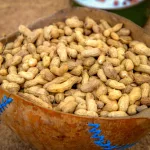
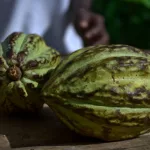
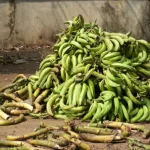
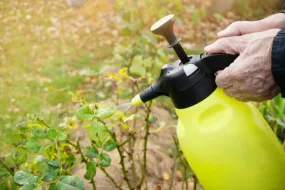
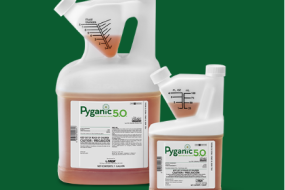
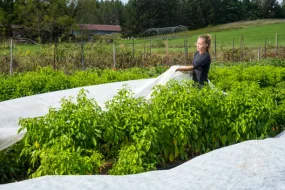
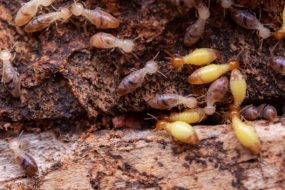
One reply on “Discover The Top 10 Common Plant Diseases in Organic Farming and How to Beat Them”
[…] Read, Also >>>>> Discover The Top 10 Common Plant Diseases in Organic Farming and How to Beat Them […]